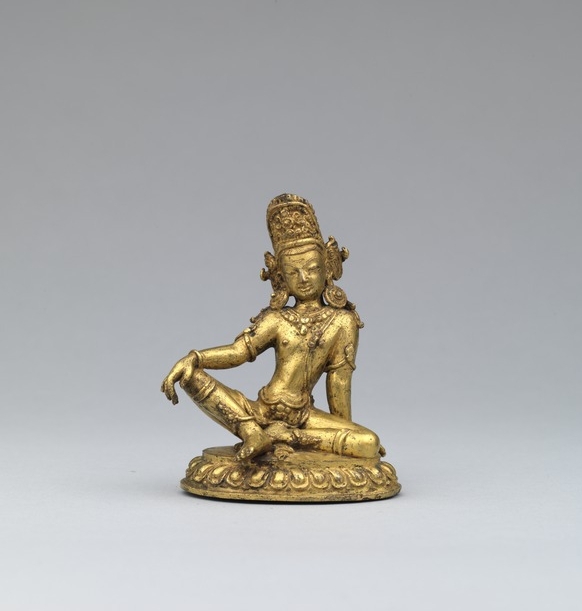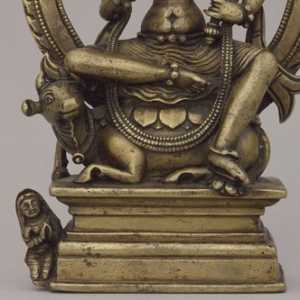
Though Nepalese art can be massive in size, some of the most magnificent and important works are actually quite small. While you might be drawn to the largest or most flashy works of art in the gallery, master craftmanship is often evident at a micro scale.Whether you’ve never been to the Rubin or just missed them during your last visit, check out these tiny treasures and see if you can spot them throughout the Museum:
Garuda (on display in Masterworks of Himalayan Art)

A favorite of Museum visitors, this 13th-century sculpture captures the magnificence of Garuda—Vishnu’s animal vehicle—in a small package. Though he’s only eight inches tall and four inches wide, his broad chest and elongated wingspan suggest his powerful and significance to the Nepalese people. Garuda is known for being a powerful mythical creature with incredible military might. You wouldn’t know it from looking at this small sculpture, but Garuda is supposed to be incredibly large with a wingspan of 330 yojanas (which roughly equals around 3000 miles). This sculpture was most likely part of a much larger structure, demonstrating the incredible attention to detail used by artisans of the Kathmandu Valley.
Vasudhara (on view in Nepalese Seasons: Rain and Ritual)

In the Kathmandu Valley, Vasudhara is an important goddess of the harvest. This sculpture from the 12th-century is only about seven inches tall and six inches wide. The name “Vasudhara” means “shower of wealth,” a reference the abundance she provides. In the Kathmandu Valley, Buddhists will worship her at the exact moment the rice becomes ready to harvest.
Indra (on display in Gateway to Himalayan Art)

This 16th-century sculpture of Indra is incredibly delicate and conveys a sense of regality fitting for the king of the gods. Despite his high status, he is still quite small with a height of about three and a half inches tall, three inches wide, and two and a half inches deep. He wears his iconic round crown etched with cloud foliage, tying him to to the sky as the god of thunder and lighting. His pose has a life-like fluidity to it, a key trait of the Nepalese sculptural style.
Kumara (on view in Nepalese Seasons: Rain and Ritual)

Don’t underestimate his size! Coming in at five inches tall and three inches wide, the tiny Kumara rides his mount, a peacock, while he holds a spear in his right hand. Worshiped during the festival of Sithi Nakha, Kumara signals the beginning of the rice planting season and the start of the monsoon season. According to curator Guatama Vajracharya, the Nepalese consider Kumara to be the archetypical “rain baby” representing both the water droplet and the seed necessary to produce a successful harvest in the fall.
What Tiny Treasures have you found at the Rubin? Keep your eyes peeled during your next visit.
Add Your Thoughts
Comments are moderated, and will not appear on this site until the Rubin has approved them.



